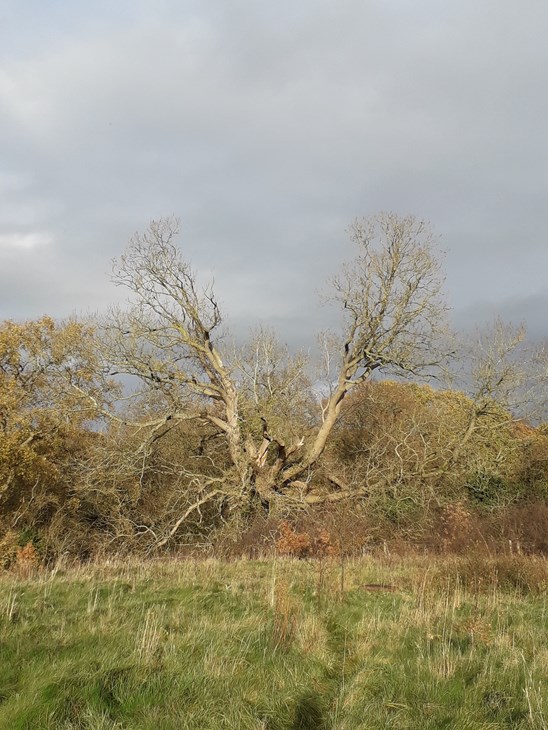On the boundary of the Trefnant Nature Reserve sits a special tree.

During National Tree Week (28 November – 6 December) the UK’s largest annual tree celebration, marking the start of the winter tree planting season (November to March each year) we thought we would bring you the story of a very special tree.
On the boundary of the Trefnant Nature Reserve sits a special tree. It is an Ash tree (Fraxinus excelsior) which is not only very old, but is very beautiful. The girth of the tree – which is a measurement of the trunk circumference at 1.5m above ground level – is around 5 metres. Using this measurement, it is possible to estimate the age of the tree to around 250-270 years old.
Ash trees are threatened by a disease called “Ash Dieback” caused by a fungus called Hymenoscyphus fraxineus, which is having far-reaching and devastating effects on the UK Ash tree population. Some estimates suggest that many Ash trees will be affected, having a visible impact on the UK landscape.
This tree was recently added to the Ancient Tree Inventory: The Ancient Tree Inventory is a database set up by the Woodland Trust to record all the ancient trees in the UK, creating maps and information which are accessible to the public. Ancient Trees provide habitat for many other species, their presence in a landscape can dramatically increase biodiversity by providing habitat for numerous other flora and fauna. By adding their details to the database, it is a step in the right direction to ensure these trees will be looked after and cared for into the future. This is important not only for the animals and plants which rely on them, but also so future generations can appreciate these veterans of the countryside.
With this tree suspected to have seeded and started growing around 1750-1770, it has stood through many significant events and Wales has changed dramatically in its lifetime. The industrial revolution took off in North East Wales, metalworks, mining, and other heavy industries would have really got going during this time, leading to a huge population boom in Wales. The country has certainly changed very much since then, this tree has lived through these changes and continues to live on, we hope for many years yet.
